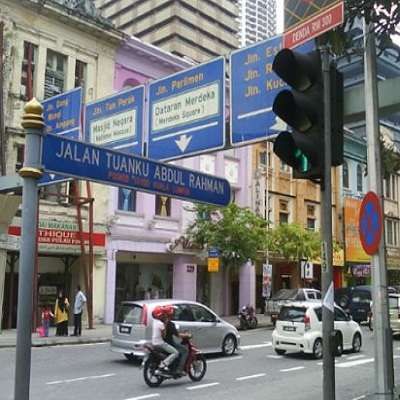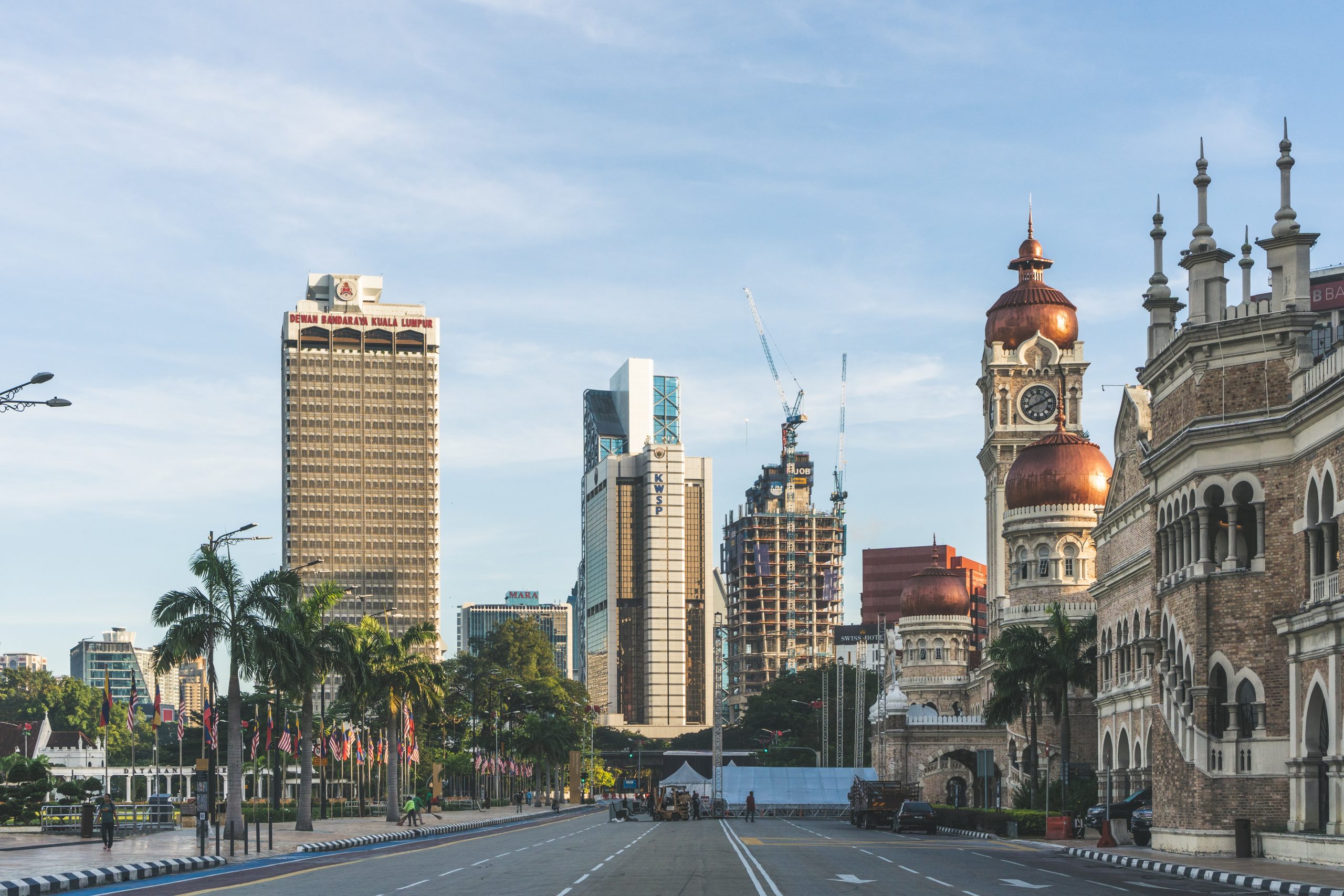
From tin town to tower city
Published on July 27, 2010 | by kiat.net
Mining Tin In The “Muddy Confluence”
Near the center of Kuala Lumpur, where the Klang and Gombak rivers flow quietly together forming a broad delta, their confluence barely noticed amid the dwarfing skyline of gleaming new hotels and office buildings… this is where it all began in 1857 for a group of 87 Chinese miners who were in search of tin. Those pioneers were a rough, hardy lot, and the city retains some of that early boomtown character. At that time, tin was in huge demand, especially by America and the British Empire, which needed the durable, lightweight metal to help fuel their industrial revolutions. Strategically commanding both river valleys, the community flourished as a tin-collecting center despite its malarial jungle location. The tin prospectors flowed into this place they named the “muddy confluence” (Kuala Lumpur in Malay) and settled in Ampang (now a suburb), forming factions within themselves which wrestled for this precious material. Chaos ensued and in 1868, the headmen of the local clans elected a man named Yap ah Loy as “Kapitan China,” or leader of the Chinese community. And he became known as the founding father of KL.
Civil War & The British Intervention
Kuala Lumpur had its share of setbacks before it evolved into one of Asia’s richest capitals. For instance, many of the original miners died of malaria and, as other prospectors (looking to get rich) filtered in, the town was overrun by rampant lawlessness. It was the Malay Civil War, however, that was most devastating. Before the British intervened to quell the uprising, the city was completely destroyed by fire. The Malay Civil War involved local sultans fighting for the throne of Perak; the state to the north of where KL was in the state of Selangor. Swept up in conflict, KL burnt to the ground. The merchants of the Straits Settlements, concerned that the war would ruin their prosperity, asked Britain to intervene. Fearing the loss of its tin interests, the British sent Governor Andrew Clarke to apprise the situation. Clarke gathered the feuding princes and convinced them to sign the Pangkor Agreement in 1874. The Agreement ended the war, established a new Sultan of Perak, and – most significantly – called for the presence of a British Resident “who must be asked and acted upon on all questions other than those touching Malay religion and custom.” This was the beginning of a dramatically increased British involvement in Malaya, one that would eventually place Kuala Lumpur at the center of history.
Rebirth Of The Capital City & Independence
In 1880 Kuala Lumpur superseded Klang as the state capital, and its rapid growth thereafter has been attributed to Sir Frank Swettenham, British resident after 1882. Frank Swettenham, the Resident of Selangor, chose KL as his administrative center and oversaw the rebirth of the city, ordering the construction of new buildings using brick. He initiated construction on the Klang-Kuala Lumpur Railway and encouraged the use of brick and tile in buildings as a fire precaution and as an aid to better health. In 1896, Swettenham united the Sultans of four states under the umbrella of the Federated Malay States (FMS), and KL was chosen as the capital because of its central position. The city became a classic center of British colonialism. Sharply uniformed officers and bureaucrats administered the FMS from beneath the distinctive copper domes of the Sultan Abdul Samad Building. In the off-hours, they played cricket on the field of the Padang and sought liquid comfort in the Selangor Club, where only whites were allowed. The club became a symbol of British imperialism and oppression and fueled the ever- growing dreams of independence. Kuala Lumpur’s population greatly increased after World War II; under a resettlement program new villages were established on the city’s outskirts during a long (1948-60), Communist-led guerrilla insurgency. At midnight on August 30, 1957, amidst a crowd of tens of thousands, British soldiers finally lowered the Union Jack for the last time in front of the Selangor Club. Kuala Lumpur became the capital of the independent Federation of Malaya in 1957 and of Malaysia in 1963.
From Racial Riots To Gleaming Skyscrapers
With independence, KL was poised for its greatest transformation ever. One of the city’s darkest days came in 1969, when civil unrest – spawned by racial tensions – swept through the city, sparking a state of emergency that would last for two years. Bolstered by a growing economy and a sincere desire for cooperation between Malaysia’s ethnic groups, the tensions subsided, and in 1974 the city was given the status of Wilayah Persekutuan (or Federal Territory). The last 10 years have seen Kuala Lumpur undergo phenomenal growth, with a population explosion of almost 50 percent, not to mention development on a monumental scale. The world’s tallest buildings, the Petronas Twin Towers, now rise above the city of 2 million. The patriotic locals are always out in force on 31 August, the anniversary of Malaysian independence back in 1957, KL’s proudest moment as the Union Jack slid down and the new Malaysian flag was hoisted above the capital. If those 87 Chinese miners could have poled their way 140 years up the river of time, they probably wouldn’t recognize the legacy that began where the two muddy rivers met.NOTE: On June 4th, 1999, the federal administrative capital moved to Putrajaya.









